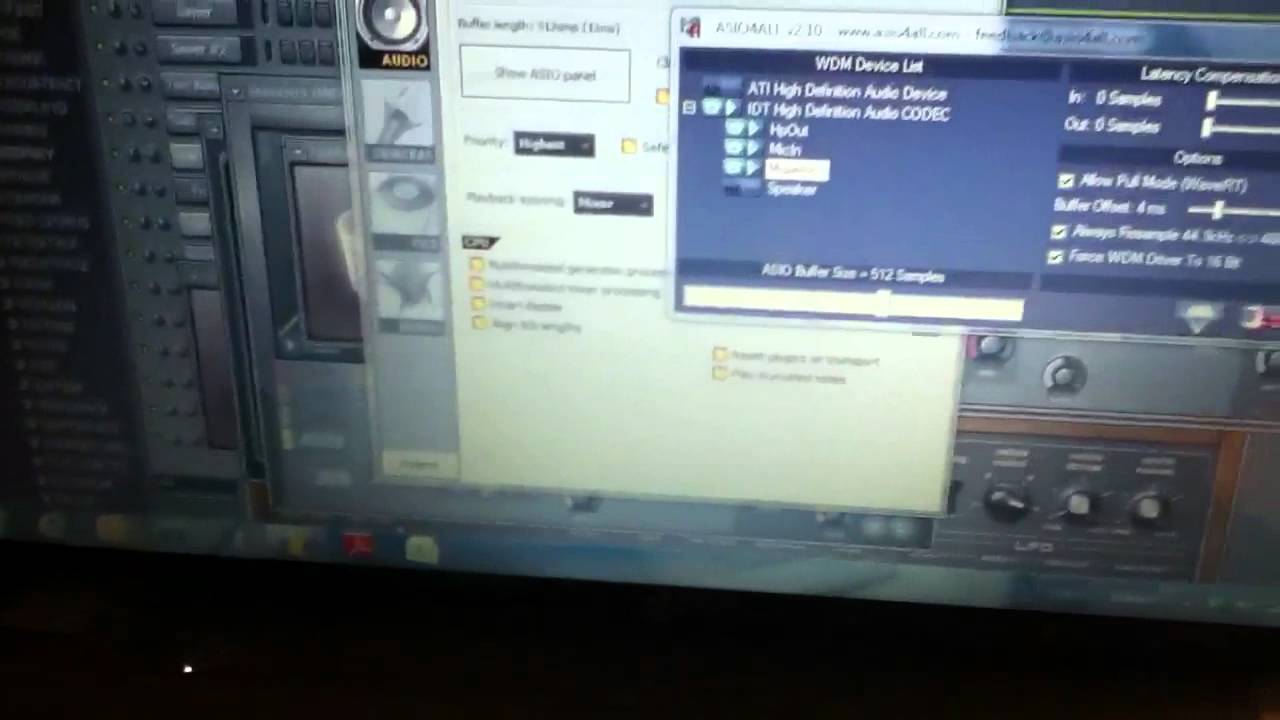
- FL STUDIO ASIO DRIVER NOT CONNECTED INSTALL
- FL STUDIO ASIO DRIVER NOT CONNECTED DRIVERS
- FL STUDIO ASIO DRIVER NOT CONNECTED WINDOWS 10
- FL STUDIO ASIO DRIVER NOT CONNECTED PROFESSIONAL
- FL STUDIO ASIO DRIVER NOT CONNECTED DOWNLOAD


FL STUDIO ASIO DRIVER NOT CONNECTED INSTALL
FL STUDIO ASIO DRIVER NOT CONNECTED DOWNLOAD
FL STUDIO ASIO DRIVER NOT CONNECTED WINDOWS 10
Downloading and Installing ASIO4All on Windows 10
FL STUDIO ASIO DRIVER NOT CONNECTED DRIVERS
What is ASIO4All?īut what if you don’t have an audio interface but still want to experiment with audio production? Or if you’re traveling and only have the option of using your headphones with your laptop’s headphone jack for monitoring? Enter ASIO4All.ĪSIO4All is a free tool that provides a generic ASIO driver within Windows for your audio hardware and software to utilize instead of the native Windows driver.ĪSIO4All is essentially a ‘driver wrapper’ it packages the native Windows audio drivers to appear as an ASIO driver, thus enabling it to bypass the additional software layers and connect directly to the onboard soundcard. Since Windows doesn’t provide an ASIO driver natively, audio interface manufacturers implement their own ASIO drivers for their products which must be downloaded and installed separately to make use of the interface.
FL STUDIO ASIO DRIVER NOT CONNECTED PROFESSIONAL
This enables far less latency and makes real-time professional-grade audio production possible.ĪSIO has become the standard for professional audio production on Windows systems. The ASIO driver bypasses all the software layers that the native Windows driver would have to go through, and instead connects directly with the soundcard. To overcome this problem with native Windows drivers, Steinberg introduced a proprietary driver called Audio Stream InputOutput or ASIO. The Windows native audio driver produces significant latency because it involves the software commands having to traverse several software layers to access the soundcard, making it unsuitable for audio production. For example, if you play a note on your MIDI keyboard connected to a VST plugin, you should hear the output almost instantaneously with no perceptible delay. Otherwise, try using a powered USB 2.0 hub (This solves the compatibility issue for most users.Pro audio demands that there be very little lag or ‘latency’ in the communication between audio devices and software. If you are experiencing problems with your hardware when connected to a USB 3.0 port, try connecting it to a USB 2.0 port if your computer has one. NOTE: Some hardware designed for USB 2.0 may not function correctly when connected to a USB 3.0 port due to backward compatibility issues with USB 3.0 chipsets. Check the default playback device via the Windows sound control panel and set it back to the internal card that's built into your computer.

If it is set to the external sound card, then this may force that card to WDM mode, preventing you from using it as an ASIO sound card. NOTE: If you are getting an ASIO error when trying to use an external sound card (Or MIDI controller with built-in sound card) that is capable of both ASIO and WDM, check what the default Windows playback device is set to. If you change the port, you will need to re-install the drivers again. Sound settings for MIDI controllers with built-in sound cards commonly used with VirtualDJ can be found on the following page: Controller Configuration And Troubleshooting And device drivers for hardware commonly used with VirtualDJ can be found on the following page: Common Device Drivers NOTE: Some drivers for external sound cards are USB port specific, so you will need to always plug the sound card into the same USB port. If you are using an external sound card or a MIDI controller with a built-in sound card, make sure that it is connected to your computer BEFORE starting VirtualDJ. Also, make sure that you have the latest drivers and firmware installed from the manufacturer's website. Please go to CONFIG -> Sound Setup and verify that your sound settings are correct for the sound card(s) that you are using then click APPLY. This problem is normally caused by incorrect sound settings. I get the message "Error in ASIO Sound Driver" or "Errror in WDM Sound Driver"


 0 kommentar(er)
0 kommentar(er)
